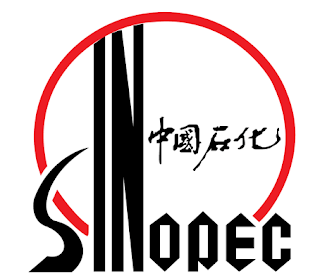SKK Migas: The reason Shell withdrew from the Masela Block due to the financial condition exposed to the corona
The coronavirus pandemic effect (Covid-19) hit many industrial and business sectors globally, also in the country. As a result of the outbreak, Royal Dutch Shell Plc (Shell) decided to leave the Masela Block Abadi Gas Project, Maluku Province. Currently, lnpex Corporation (lnpex) as the largest shareholder in the block is looking for a replacement for Shell.
"Yes, that's right (Shell is retiring). Inpex is looking for a replacement," said Deputy of the Special Task Force for Upstream Oil and Gas Business Activities (SKK Migas) Julius Wiratno.
According to him, the reason for Shell's withdrawal from the Masela Block development project was because of the cash flow conditions that were affected by the Covid-19 pandemic situation. Shell decided to focus on other projects that were taking place in Indonesia.
In the Masela Block, Shell has a 35% stake, while Inpex Corporation 65%. Later, the local government will receive a 10% share of participation taken from the ownership of Shell and lnpex.
"In a number of projects in other countries, it is also lacking or not going well so that the company's cash flow is not good. They (Shell) focus first on a number of projects that have already taken place," said Julius.
Now, both lnpex Corporation and Shell are continuing discussions on the option to take over the full participation by lnpex. In addition, the option to search for new partners also appears by lnpex.
Shell Indonesia management does not want to comment on the development of the Masela Block Abadi Gas Project. Regarding the question above, I have no comment, "said Shell Indonesia's External Relations VP Rhea Sianipar.
Previously, SKK Migas Head Dwi Soetjipto mentioned the condition of the liquefied natural gas (LNG) business which was currently in decline, causing several oil and gas companies to worry about the project implementation, including for the Masela Block.
"Currently the oil and gas industry is facing serious problems including LNG prices. There is the fear of project owners such as the Masela Block to execute projects going forward," Dwi Soetjipto said.
The schedule can be Delayed
Julius added that it was not impossible that the time to implement the Masela Block Abadi Gas Project would increase or reverse the original schedule. However, SKK Migas ensures that lnpex is committed to completing projects on time. The Masela Block is targeted to be streamlined in 2027.
On October 11, 2019, Inpex Corporation and Shell Upstream Overseas Ltd together with SKK Migas signed a cost recovery revenue-amendment contract including an additional seven years of allocation and extension of the Abadi liquefied natural gas refinery project with SKK Migas.
The signing marked the implementation of a formal agreement on the terms of the cooperation contract that was previously agreed upon and announced in July 2019. Previously, PT Pertamina (Persero) had expressed interest in participating in the project. Pertamina once sent an official letter to conduct strategic talks on the management of the gas field in 2011 and 2016.
Drama in the Masela Block
A series of dramas colored the process of developing the Masela Block. After Shell intends to flee, the manager of Masela, Interp Corporation, must work to secure the project. As a flashback, in the middle of 2019, the Indonesian government and Inpex Corporation had agreed on the Masela Block development plan.
At that time the Minister of Energy and Mineral Resources (ESDM) Ignasius Jonan had to go back and forth from Jakarta-Tokyo to conduct very difficult negotiations. On Tuesday 16 July 2019, finally the Masela Block POD revised document was signed by SKK Migas Chief Dwi Soetjipto and CEO of Corporation Corp Takayuki Ueda at the Merdeka Palace, witnessed by President Joko Widodo and ESDM Minister Ignasius Jonan.
The agreement with an investment value of around US $ 18.5 billion to the US $ 19.8 billion is the culmination of the back and forth negotiations over the development of the Masela project over the past 20 years. Development of the Abadi Gas Field, the Masela Work Area uses an onshore LNG scheme, with lnpex as the operator.
The Abadi LNG Plant is designed to have a capacity of 10.5 million tons of natural gas per year, including around 9.5 million tons of LNG per year, 150 mmscfd of local gas supply through land pipes, and approximately 35,000 barrels of condensate per day.
Kontan, Page-12, Monday, July 6, 2020













































